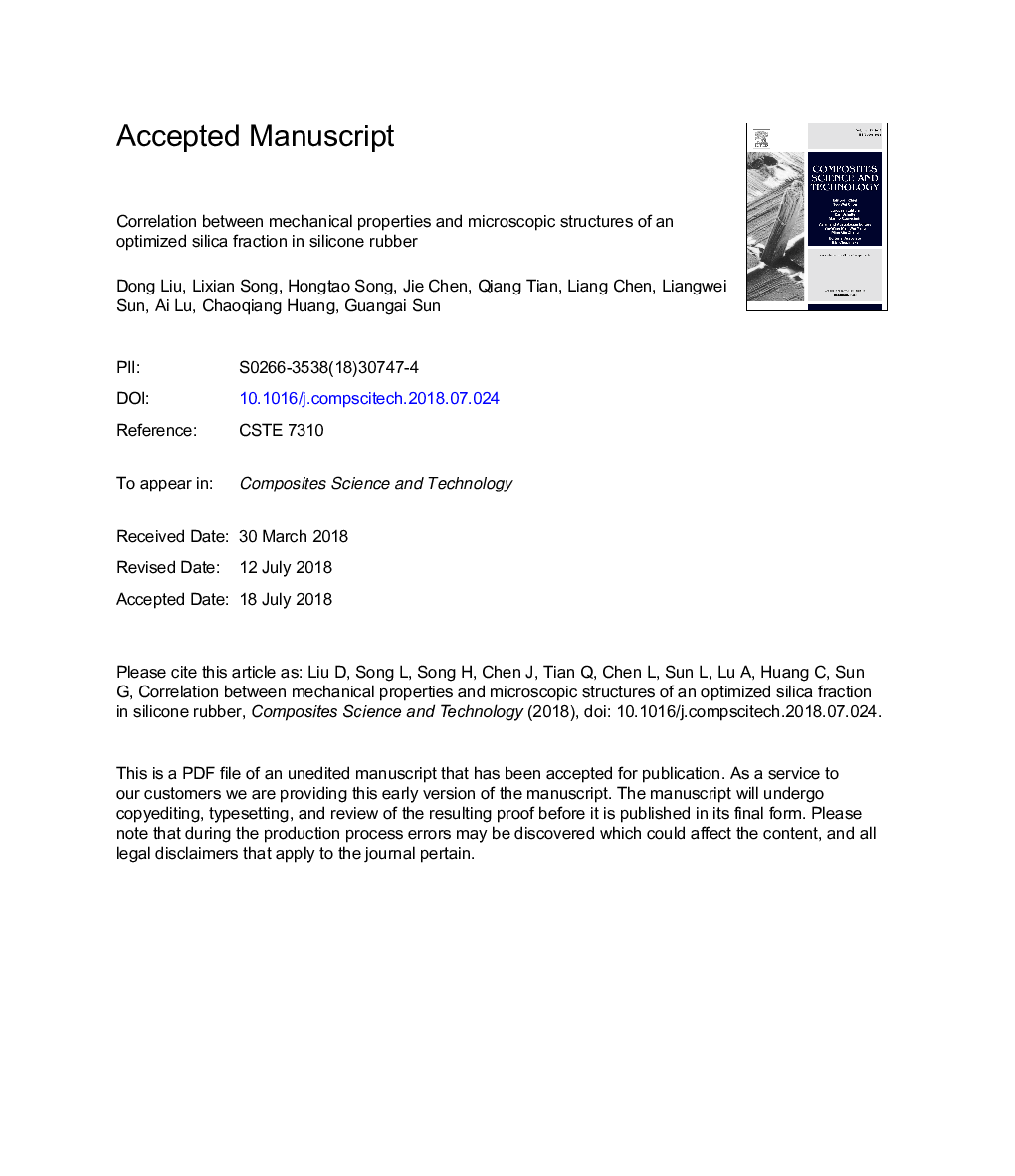| Article ID | Journal | Published Year | Pages | File Type |
|---|---|---|---|---|
| 7214168 | Composites Science and Technology | 2018 | 22 Pages |
Abstract
The mechanical properties and the hierarchical filler structures were characterized on a series silica-filled silicone rubber with a filler fraction (ΦSi) varied from 0.05â¯phr to 80â¯phr (parts per hundred rubber). Uniaxial elongation measurement suggests that there is a percolation threshold between 10 and 30â¯phr. Moreover, an optimum ΦSi range from 40â¯phr to 50â¯phr is found, in which the best mechanical performances of reinforcement are shown. The microscopic structures were crosschecked by small-angle neutron scattering (SANS) and scanning electron microscopy (SEM). The effects of the ΦSi and the fabrication process on the morphology of samples are unveiled. The correlation length among aggregates extracted from SANS data monotonically decrease from 237.0â¯nm to 136.5â¯nm with increasing the ΦSi from 30â¯phr to 80â¯phr. The average radius of gyration of aggregates ãRg,aggã fitted with the Beaucage model monotonically decrease from 49.2â¯nm to 37.5â¯nm with increasing ΦSi from 10â¯phr to 80â¯phr. Providing a 10â¯nm thickness bound rubber as bridge, samples with optimum ΦSi yield a morphology that the radii of aggregates and the gap filled with polymer matrix in between are equivalent as both around 60â¯nm.
Keywords
Related Topics
Physical Sciences and Engineering
Engineering
Engineering (General)
Authors
Dong Liu, Lixian Song, Hongtao Song, Jie Chen, Qiang Tian, Liang Chen, Liangwei Sun, Ai Lu, Chaoqiang Huang, Guangai Sun,
